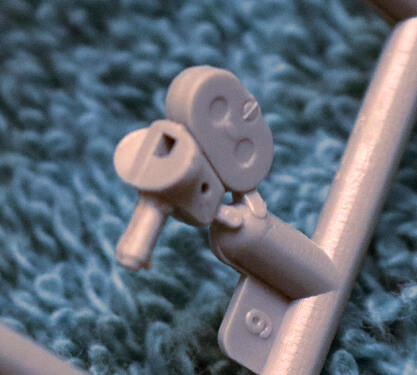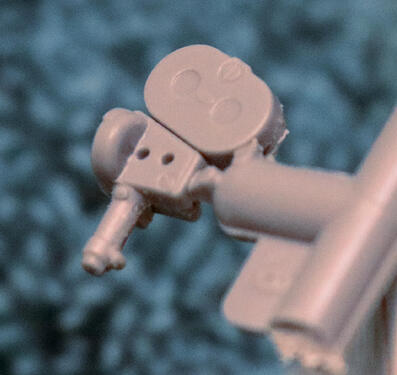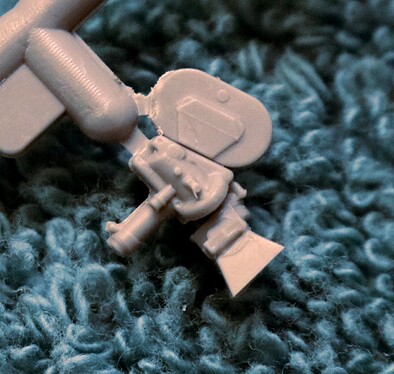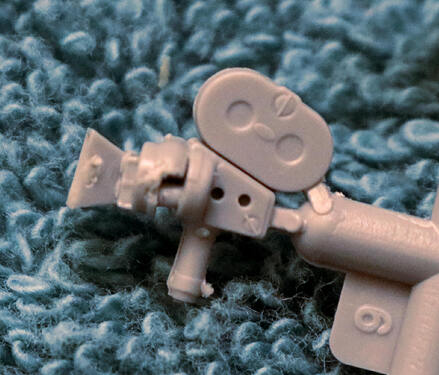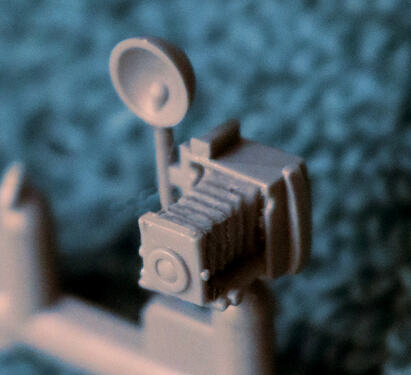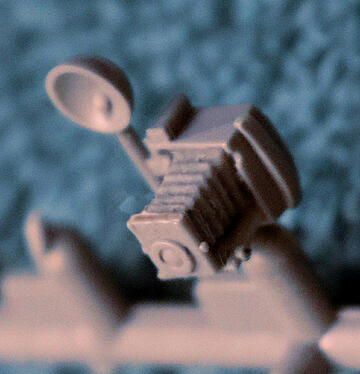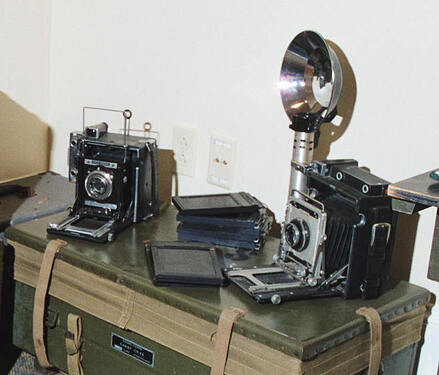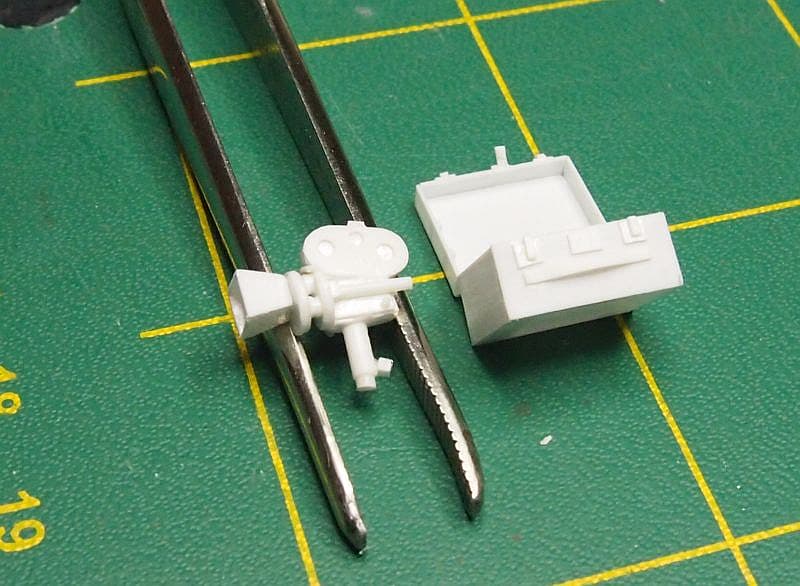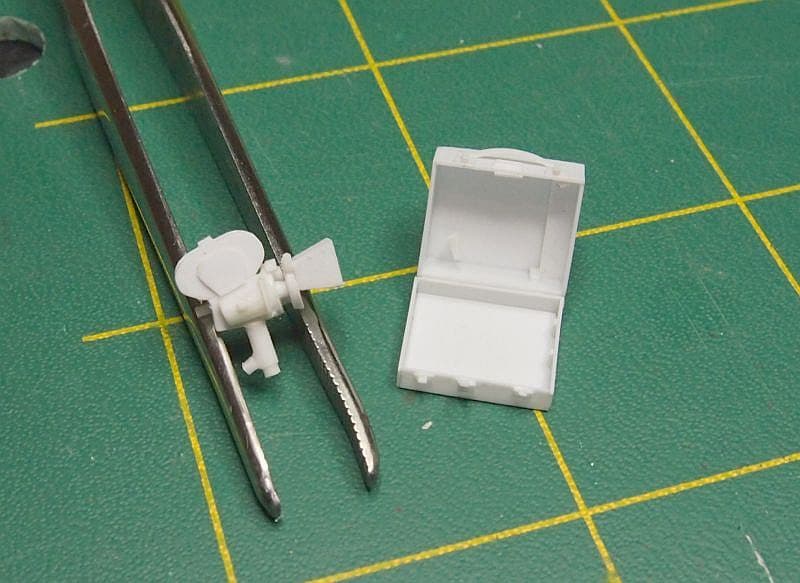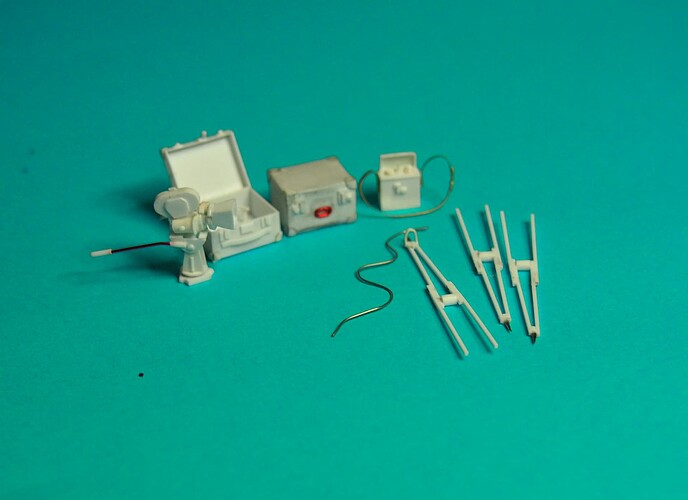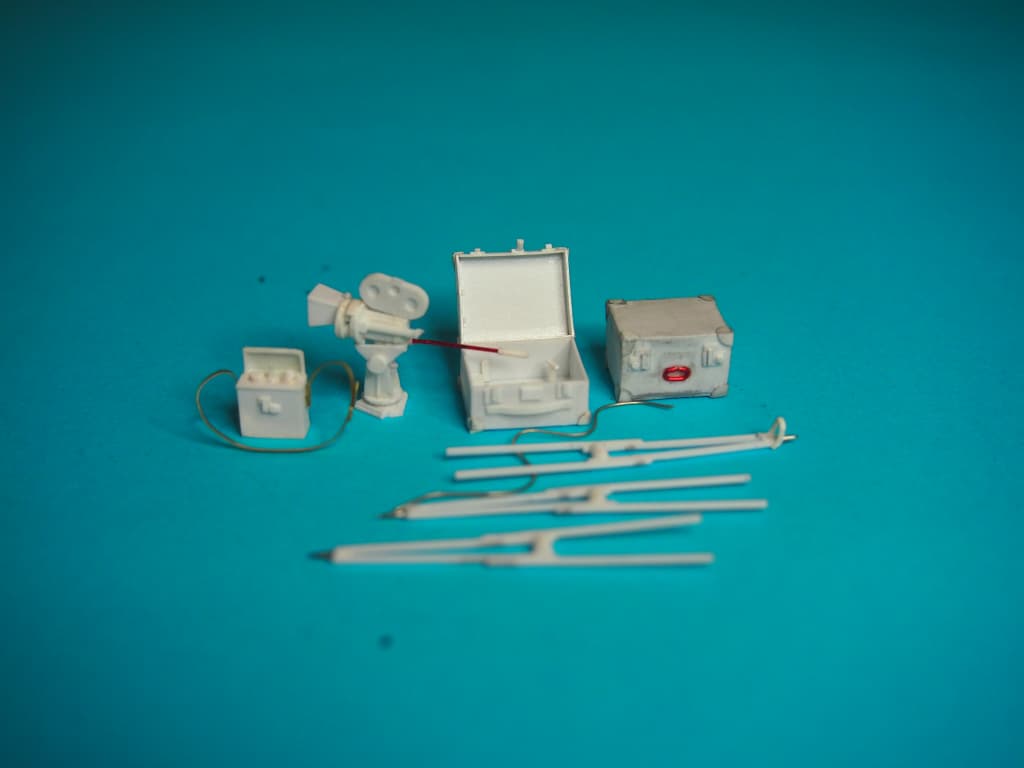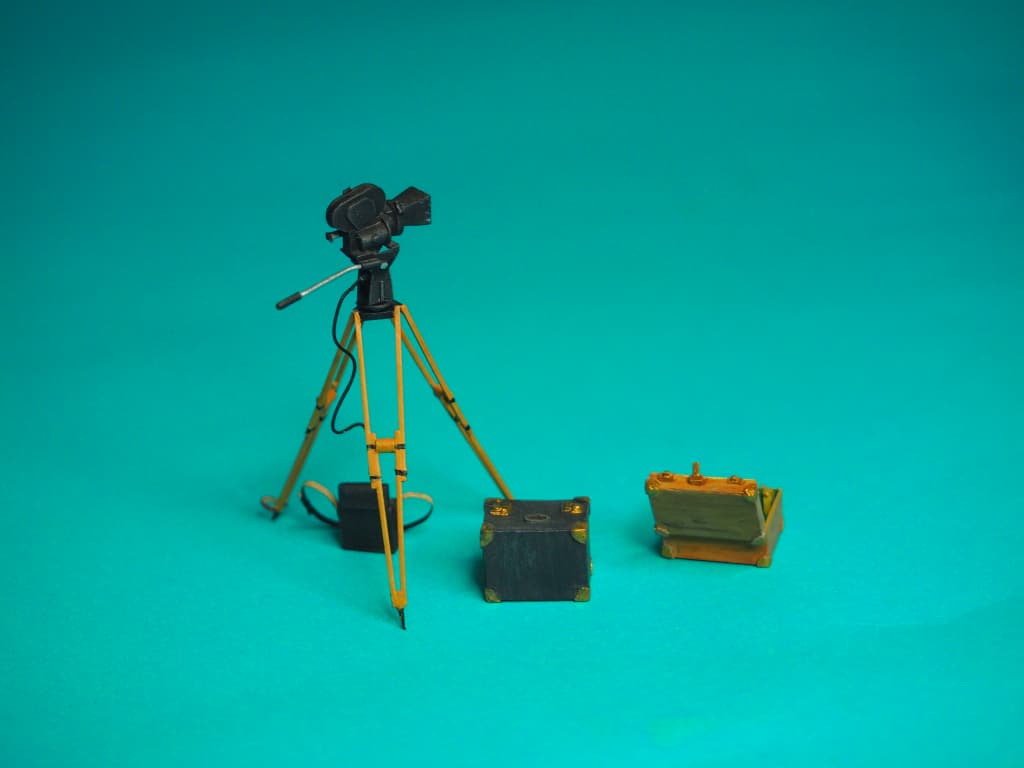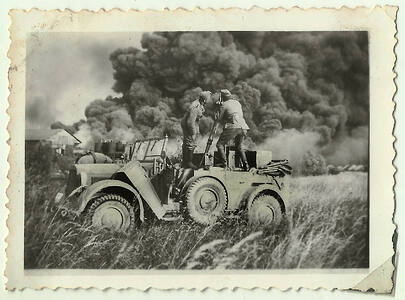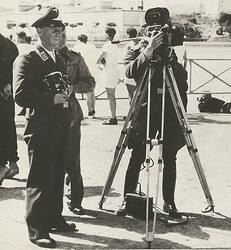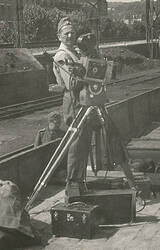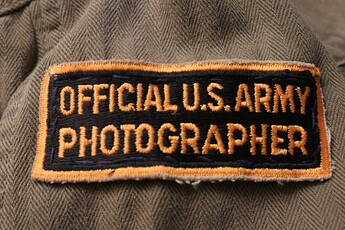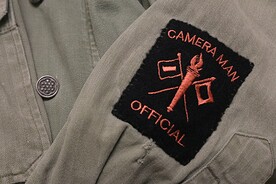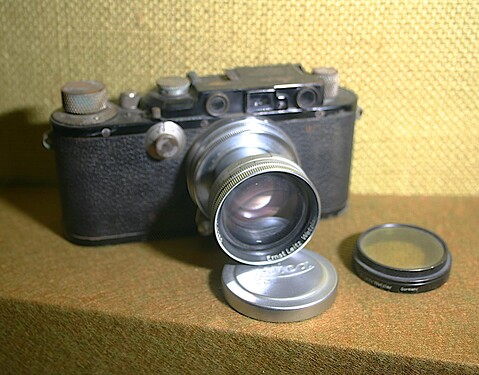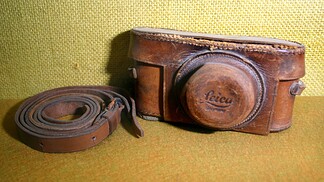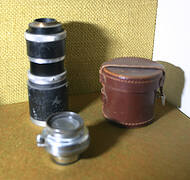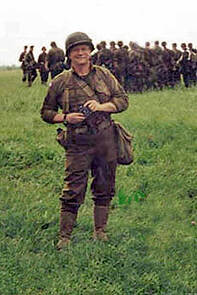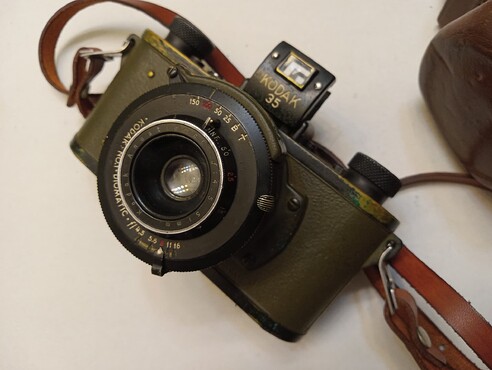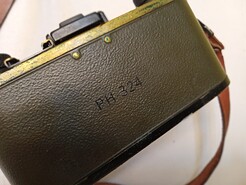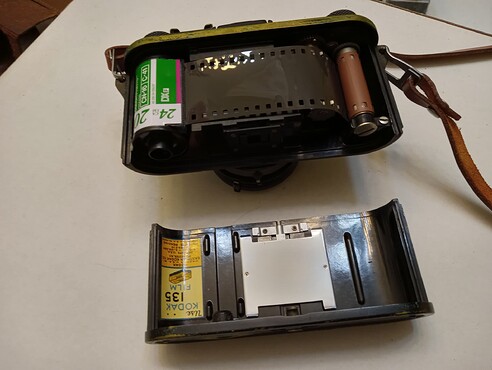Its a little known fact that the semi reclined guy typing was actually modelled by Brian @BootsDMS while on exercise in 1945 lol ![]()
![]()
![]()
Tim I just wondered if you are/were at some point a Combat Photographer, a Professional Photographer or a Theatrical/Movie Special Effects Master because your photographic work certainly brands you as such.
Of course we already knew of your time as a professional stunt pilot and barn stormer.
First to the Arriflex German Movie Camera:
Peter I think/hope these photos address your concerns.
Rear view of the lens/turret assembly:
That wedge shaped piece is the locator pin.
Front view of camera body/lens turret:
Rear view of camera body:
Assembled camera - right side:
Assembled camera left side:
I won’t be attaching the viewfinder eyepiece until after I have the camera off the sprue and have smoothed out some of those rough spots.
Peter, I would say that the electrical supply plug you asked about looks more oval than round on the model. Also the mold makers seem to have addressed, at least partly, your concerns regarding the openness of the Arriflex lens turret assembly. I think it would be hard to do much more at this scale.
How did you know?!!
Now as to that Graflex:
These photos were all done quickly and hand held so please excuse the lack of depth of field seen here.
-
As already mentioned; the carry strap should be a separate piece. (easily fixed.)
-
The flash bulb should be larger and centered within the reflector. (The smaller bulbs came later but were still centered in the reflector.)
-
The camera bellows should in no way be extended that far to the front. (This configuration would only be correct when doing micro or macro, close up, photography.)
-
(This one is my bad!) The lens board is on upside down. The lens should be in the upper portion of that front board.
I intentionally built this camera exactly according to the instructions (other than the lens board) so that all could see the WRONG way to do it. (Perhaps that was foolish of me - don’t do as I do but do as I say!)
I will now try to dissemble this tiny model and rebuild it correctly for final comparison.
Again, as seen here below, both these post-war Graflex (they are not Speed Graphics) are fully open and ready to shoot normal/regular Press Reporter type photographs.
The camera on the right was mine when I worked at the University of Kentucky; Public Information Office in the early seventies.
*Note the 4x5 film holders stacked between the two cameras seen above. Each holder carried two sheets of 4x5 film, one in front and one in back. There looks to be 8 holders there in that stack so 16 shots total. That was very often an entire day’s hard work for a WWII Combat Stills Photographer.
Then the holders had to be unloaded and reloaded in total darkness. (Either in a make-shift darkroom or in a light tight changing bag.)
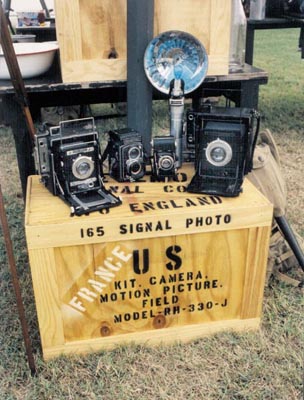
(l to r) Graflex 2.25 x 3.25, Rollie Twin Lens 120/220, 1939 German Balda Werk “Jubilette” 35mm camera, Graflex 4x5 “Black Body”
Yes, it is reproduced better than I thought. As to the level of detail, well when I scratch built mine, I just did the short cylinders for the lens too and nothing more. As you say, what else can you do in the scale. Thanks for the pics of the built up kit Mike.
Peter could you please post a link to your scratch build or even repost it here in its’ entirety? I knew I had recently seen someone doing such work and was hopping to be able to reference it here.
I hope to do some similar scratch build work on a 35mm B&H movie camera and tripod with 300’ auxiliary film magazine. (The Micky Mouse ears of movie cameras!)
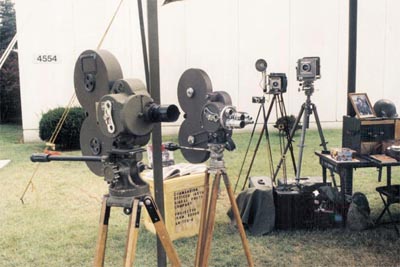
No Problem. Colour quality of the pics is not the best, but I am a modeller, not photographer ![]()
I went with the cover over the lens removed, as per the one shown in the pic showing it in use that I posted above.
I very much like that you also modeled the proper carry cases for the Arriflex. And the entire outfit is modeled to a very high standard of scale and quality!!!
I am a-gog, I am a-gasp!
Ha ha. I could actually store the unassembled camera in the case before I glued it together!
I’m trying to find my reference photos for the two cases, the camera carry all and the film cannister storage.
This webpage may interest you:
Peter, what run time would that Arriflex magazine allow the photographer? Capacity looks to be about 50 feet of film which is approximately 3 minutes run time I think.
The small 16mm Eymos had a 50’ internal capacity without adding the big 300’ capacity “Micky Mouse” ears.
Jim Bates; 165th Signal Photo Company
Seen here with a very heavily ladened Eymo with 3 lens turret.
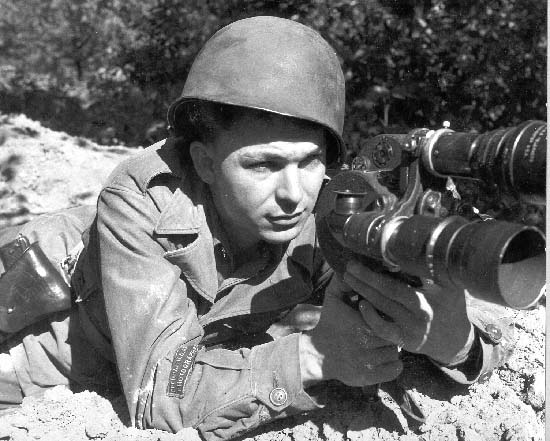
Note patch on sleeve. Often the only uniform ID the Army Photographers ever wore into combat.
Here is another (low res) patch often worn into combat.
*(Seen here is my commissioned reproduction - however embroiderer used incorrect color shades.)
Note patch on Halloran’s left cuff in this Signal Corps Graduation photo.
I was “TOLD” this photographer’s arm band was original. (Seen at the big mlilitaria “Show of Shows” in Louisville.) I was not so sure and besides, I could not afford the money he was asking.
Here is a Dio to reproduce:
Actor Micky Rooney posing with a group of Combat Photographers during a USO tour.
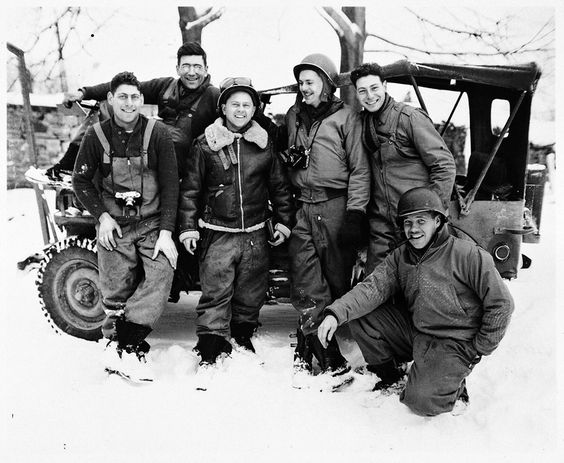
Note, the 35mm German Leica Camera that one photog carries.
Many of these were personal cameras bought before the war by the photographers themselves and then used throughout the conflict.
General Patton’s personal camera was a 35mm Leica as seen here, still on display at the George S. Patton Museum at Ft. Knox, Kentucky.
(Yes there is STILL a small G.S.P. Museum there located in part of the original Museum Building.)
I cut my teeth on a Leica not much different than this one, Summer of '69. Loaned to me by a friend. It was his bring back, a German Camera, purchased in Vietnam during his tour. That camera had truly been AROUND THE WORLD!
The standard film cannisters held 200ft of film, but there were 400 ft versions.

George Lucas using a post war version of the Arriflex 35 IIC

WOW, that Lucas photo is worth at least 10,000 words.
The Arriflex is/was the standard of the film industry for a lot of years.
p.s. 200 feet of film in that magazine - I am impressed. However the wartime film magazine looks smaller than the one in the Lucas photo. Is that a possibility?
Alas none of the above, possibly missed my calling in SFX but I really only found out how nuts I could get with a camera after I’d retired. Crunch came when a Hummel brass barrel filled with charge – intended to look like it was firing – launched as a rocket into the adjacent suburb. Kept my head down ever since ![]()
A very interesting interview with WWII Combat Photographer Walter “Skippy” Halloran can be found on YouTube at the link below.
This is not another of those “talking heads” type interviews, because interspersed almost continually throughout are hundreds of combat photographs from the days.
Yes, George is using the 400 ft type. His tripod is also post war although the collar and camera mount were basically unchanged.
Just a note about the GI Combat Photographer figure’s body position:
Some may think me exceptionally picky (and they would be correct) but the GI figure’s body position is just not right.
Perhaps we have caught him in a mid-belly laugh or some such but a photographer would normally never stand like that.
Photographers just do not lean into the weight of the camera. They lean back, away from the weight of the camera for balance, just as the German photographer is doing.
The only time your would ever catch me in that position would be if my right elbow were propped up on the edge of a bar! And even then I would have placed the camera on the bar to unload myself for a moment. Then too, you would never eat or drink OVER your camera lest you spill something on it.
I plan on adding a well loaded musette bag, hanging on a shoulder strap to the guy’s left hip (butt cheek) to make this pose appear more balanced.
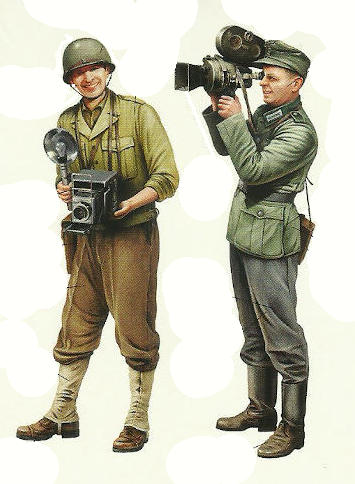
p.s. Please Note Three Items:
#1. Even though the flash bulb in this boxart illustration is still a bit too small, it IS centered within the reflector.
#2. While the ring around the lens itself would be silver, the rectangular lens board it is attached to would be black.
#3. The Graflex Camera is depicted here correctly with the bellows more compressed and the lens back somewhat from the front edge of the focusing rails and door cover. (I am having difficulty correcting mine now that it is already assembled.)
A bit of an added bonus I had not noticed before:
Barely visible but the GI photographer is also carrying his PH-324 Kodak 35mm camera in its’ closed brown/red leather case. (This is the camera Halloran mentions that was given to him right before D-Day and that he quickly “lost” shortly thereafter.)
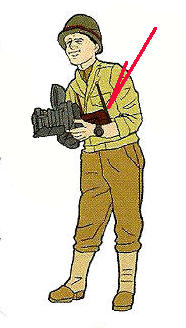 Barely visible second camera
Barely visible second camera
Notice how I am standing - leaning to off-set the weight of that musette bag.
(Containing a modern DSLR, battery grip and 3 lenses.)
Photographers lean AWAY from the load.
PH-324 - US Army issue Kodak 35mm, circa 1944
1944 Camera uses exact same film as modern 35mm in their metal cassette.


